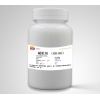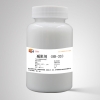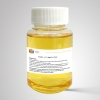Brief introduction of crude oil demulsifier
Crude oil emulsions often appear in the production and refining of oil products. The world's major crude oils are produced in the form of an emulsion. An emulsion consists of at least two immiscible liquids. One of them is a very fine dispersion, such as a droplet of about 1 mm diameter, suspended on the other liquid.
One of these liquids is usually water, while the other is often oil. It is possible for oil to be dispersed very finely in water. In this case, the emulsion is an oil-in-water type. Water is called the continuous phase and oil is called the dispersed phase. Conversely, if the oil is a continuous phase and water is a dispersed phase, the emulsion is called a water-in-oil type. Most crude oil emulsions are of this type.
Water molecules attract each other, as do oil molecules. But there is a repulsive force between individual water and oil molecules. The repulsive force acts at the interface of oil and water. Surface tension reduces this interface area to a minimum. Therefore, water droplets are spherical in a water-in-oil emulsion. In addition, individual water droplets tend to form aggregates, and the total area of the aggregates is smaller than the sum of the area of all droplets. Therefore, an emulsion composed of pure water and pure oil is unstable. The dispersed phase tends to agglomerate, and two separate layers are formed.
The repulsive force at the interface is offset, for example, the surface tension can be reduced by the accumulation of special chemicals on the interface. Technically, this effect is exploited in many cases by adding well-known emulsifiers to produce stable emulsions. Any substance that stabilizes in this way must have a chemical composition capable of interacting with both water and oil molecules, that is, it should contain a hydrophilic group and a hydrophobic group.
Crude oil emulsions are stabilized by the natural substances contained in the oil. These materials usually contain polar groups such as carboxyl or phenolic groups. They may exist in the form of a solution or a colloidal dispersion. A special effect is the attachment to the ends. In this case, most of the fine particles are dispersed in the oil phase and accumulated at the oil-water interface. At this interface, they are arranged side by side, and the polar groups point to the water. As a result, a physically stable interface layer was formed. A solid package like a particulate layer or paraffin crystals. The interfacial layer is enveloped with the results that are usually recognized by the naked eye. This mechanism explains the aging of the crude oil emulsion and the fact that it is difficult to break.
One of these liquids is usually water, while the other is often oil. It is possible for oil to be dispersed very finely in water. In this case, the emulsion is an oil-in-water type. Water is called the continuous phase and oil is called the dispersed phase. Conversely, if the oil is a continuous phase and water is a dispersed phase, the emulsion is called a water-in-oil type. Most crude oil emulsions are of this type.
Water molecules attract each other, as do oil molecules. But there is a repulsive force between individual water and oil molecules. The repulsive force acts at the interface of oil and water. Surface tension reduces this interface area to a minimum. Therefore, water droplets are spherical in a water-in-oil emulsion. In addition, individual water droplets tend to form aggregates, and the total area of the aggregates is smaller than the sum of the area of all droplets. Therefore, an emulsion composed of pure water and pure oil is unstable. The dispersed phase tends to agglomerate, and two separate layers are formed.
The repulsive force at the interface is offset, for example, the surface tension can be reduced by the accumulation of special chemicals on the interface. Technically, this effect is exploited in many cases by adding well-known emulsifiers to produce stable emulsions. Any substance that stabilizes in this way must have a chemical composition capable of interacting with both water and oil molecules, that is, it should contain a hydrophilic group and a hydrophobic group.
Crude oil emulsions are stabilized by the natural substances contained in the oil. These materials usually contain polar groups such as carboxyl or phenolic groups. They may exist in the form of a solution or a colloidal dispersion. A special effect is the attachment to the ends. In this case, most of the fine particles are dispersed in the oil phase and accumulated at the oil-water interface. At this interface, they are arranged side by side, and the polar groups point to the water. As a result, a physically stable interface layer was formed. A solid package like a particulate layer or paraffin crystals. The interfacial layer is enveloped with the results that are usually recognized by the naked eye. This mechanism explains the aging of the crude oil emulsion and the fact that it is difficult to break.





